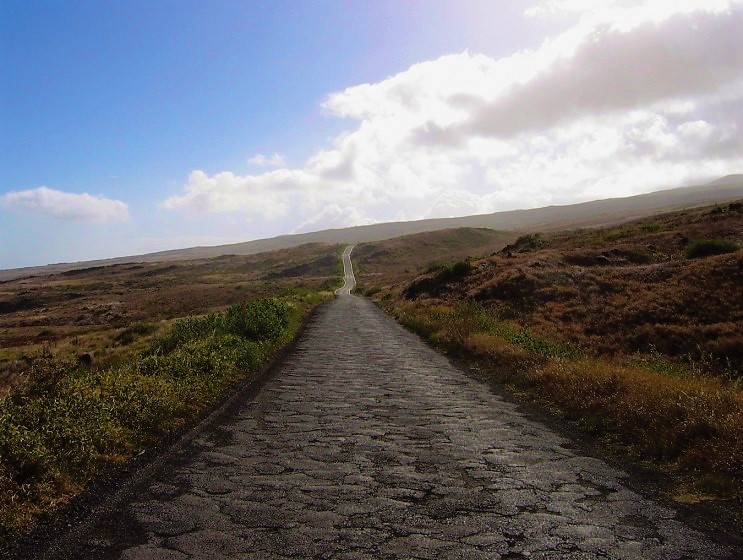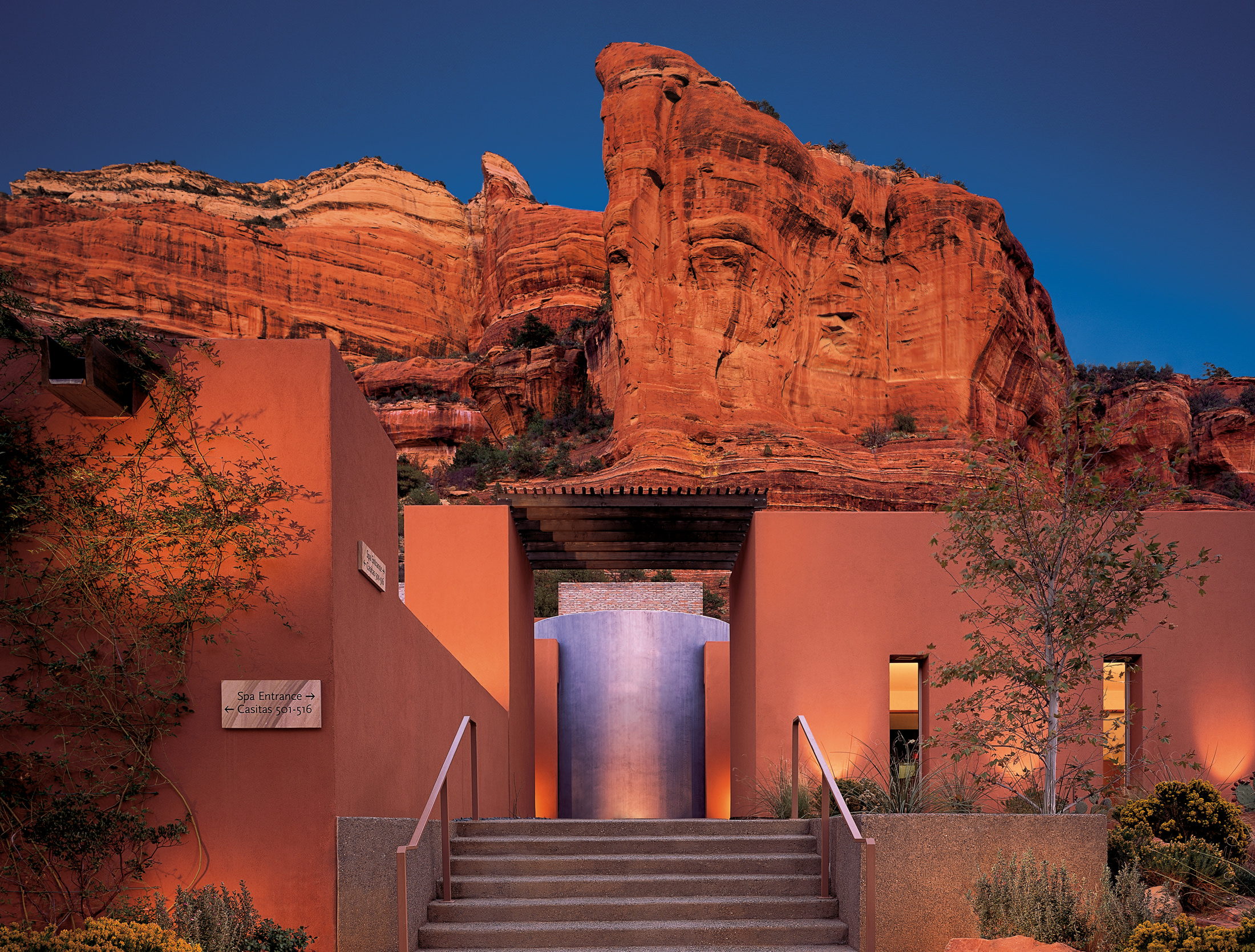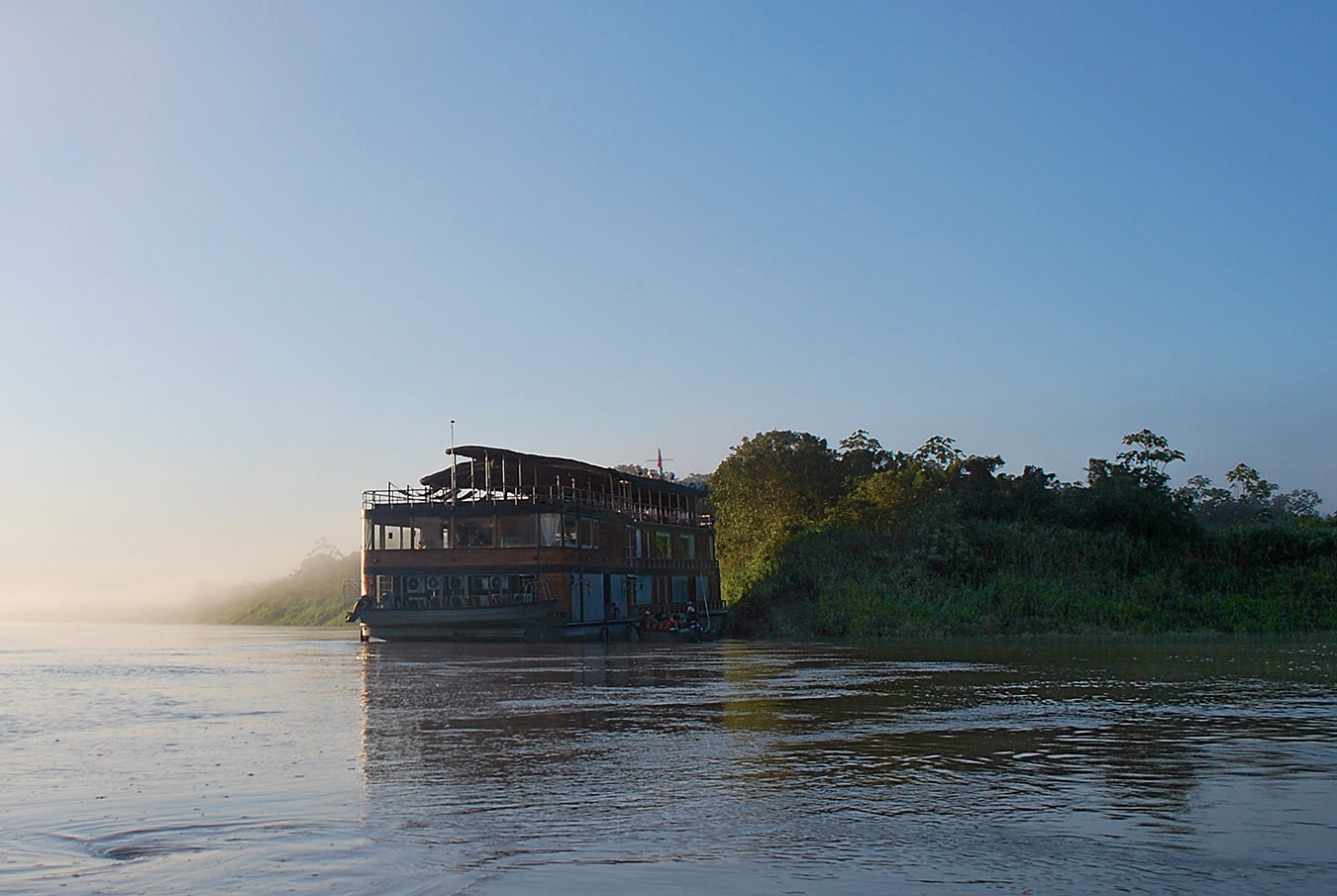A Train Ride Through History in Peru
Stone, gold, and sweet voices.
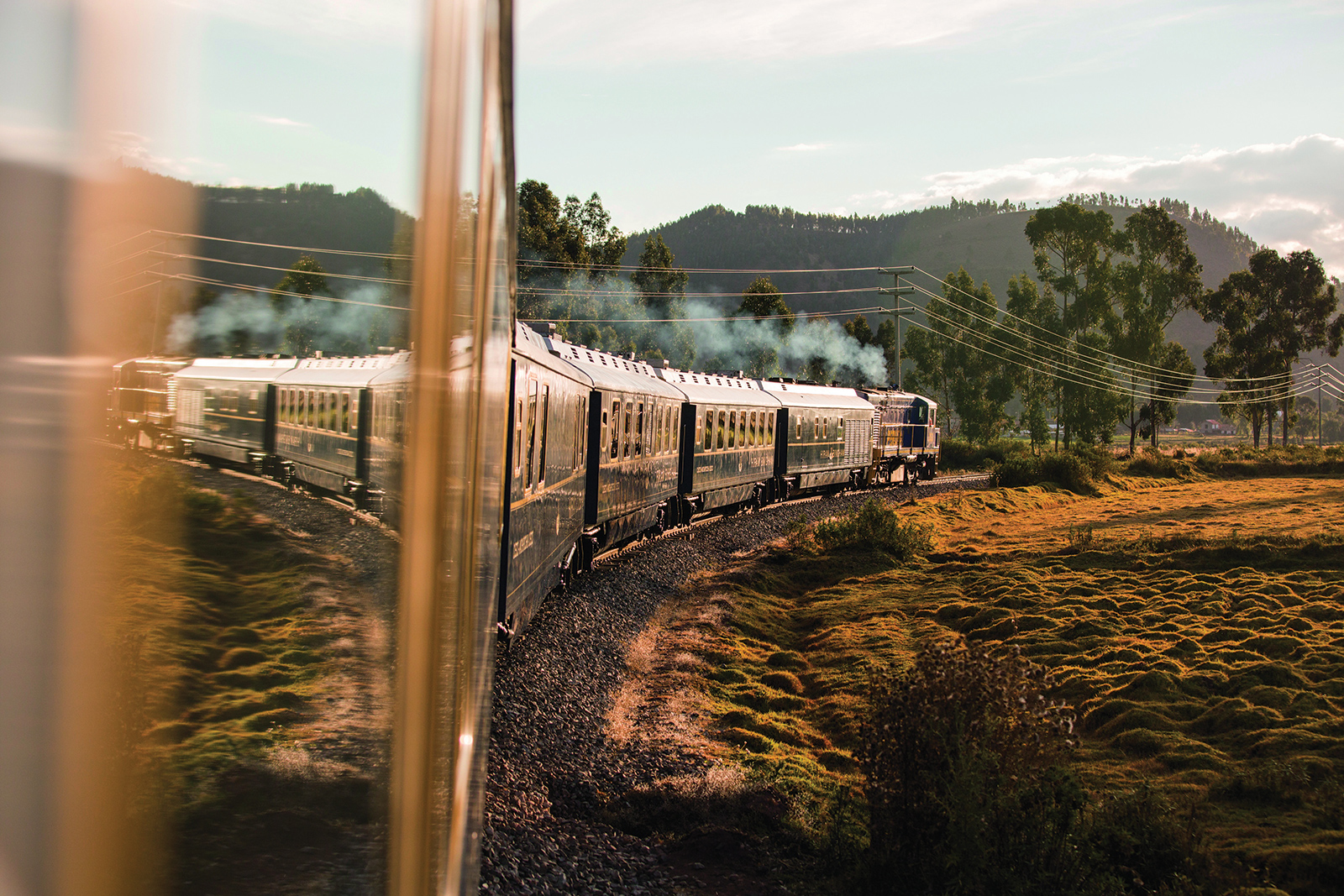
I sit back in one of the gilded, wood-panelled cars of the Belmond Hiram Bingham, South America’s most luxurious train, which runs from near Cusco to the town of Aguas Calientes. There is a full bar, and the bottles rattle slightly as if in excitement as the train vibrates down the track. I hold a pisco sour steady, waiters glide by holding inexplicably steady trays of glasses and food, and the landscape changes from mountainous desert to lush, vertiginous slopes. A soft light, filtered by the trees lining the track as well as cream curtains, animates the lacquered chairs and golden handrails inside the lounge car, moving towards Machu Picchu. I feel I am moving not only across space, but across time.
Today, the celebration inside the Hiram Bingham is a parade of languages and people. I wander through the dining cars, with their symmetry and white linen tables, towards the glass-walled observation car. A band plays. People laugh as they try to dance with the swaying of the train. A woman with hair flowing like the fields that burst from the valleys around us leans out from the back of the observation car; she basks in the sounds and laughter, the exuberant exhaust, that flow from the train.
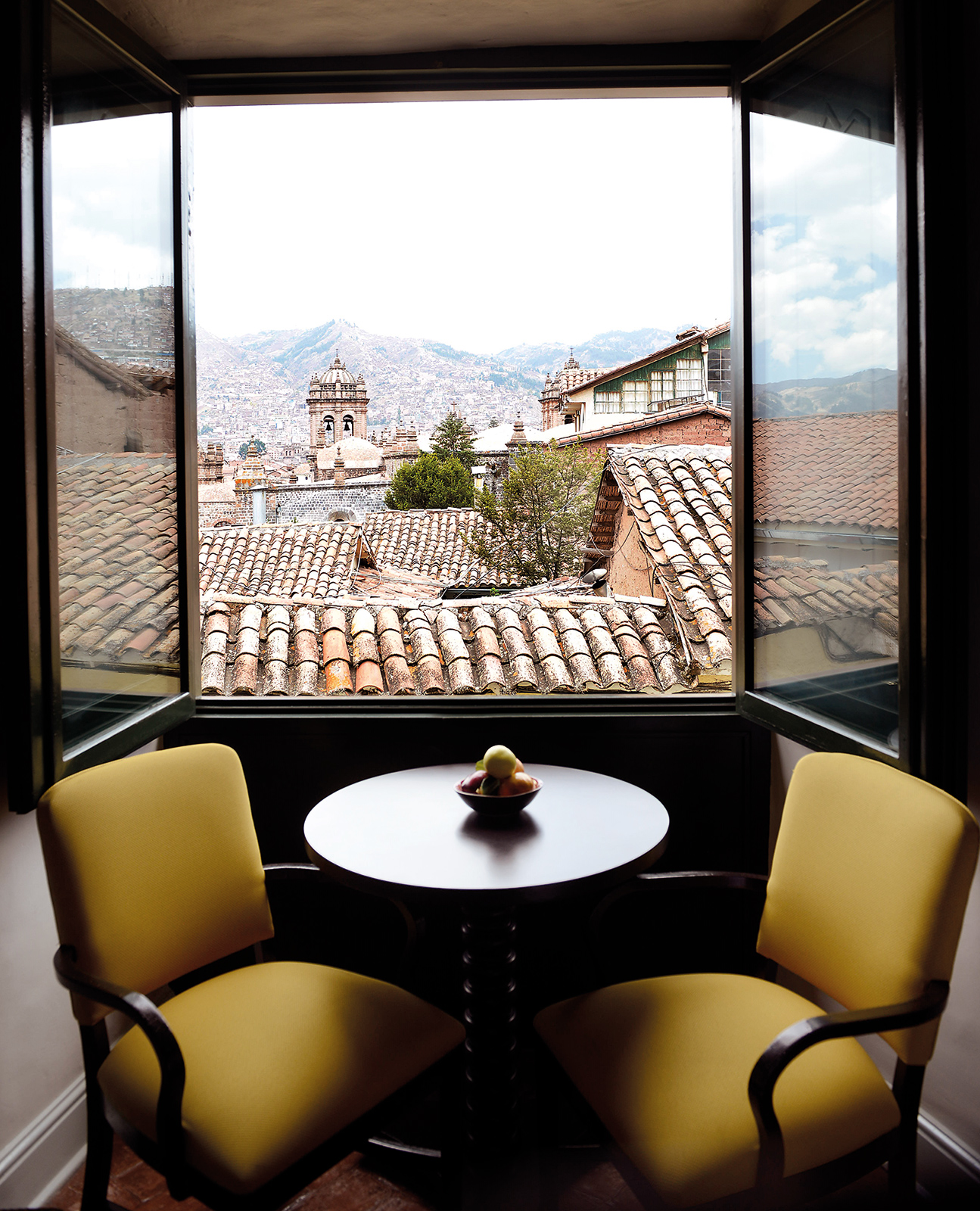
Fito Espinosa, a famed Peruvian painter, sits among the guests. He looks the part of an artist: round spectacles and a mess of white hair. His new mural on the outside of the car marks a change in aesthetic for the train, and is the reason for this celebration. Espinosa has painted an angelic visage in his signature style surrounded by birds, bringing life and specificity to the car, placing it within the vibrancy of Peru’s cultural landscape.
In Peru, time often seems jumbled, especially because the buildings and traditions of the cultural landscape present a palimpsest. There are hints of the past everywhere, and the path of this on-the-rails party has been followed time and time again: first by Incan royalty to escape the cacophony of Cusco, then by messengers to warn those at Machu Picchu of the coming Spanish. Our route today follows a similar course under different circumstances, in another era.
We exit the train at Aguas Calientes and take a coach to the summit, watching hardy hikers as they ascend the mythic peak. In need of rest and the warm, unbinding effects of coca tea, we stop at the Belmond Sanctuary Lodge, a last surprising gasp of the present before heading around the corner through the gates to the past.
Machu Picchu looms above the valley and Aguas Calientes. It is sheer history rising an impossible height, against all odds. It is unphotographable in its entirety. On top of the mountain that supports Machu Picchu, the clear air glides through the restored stone; you feel breathless, as if the history of these massive, perfectly cut stones exerts a pressure that contrasts with the lightness of the train. The effect is humbling.
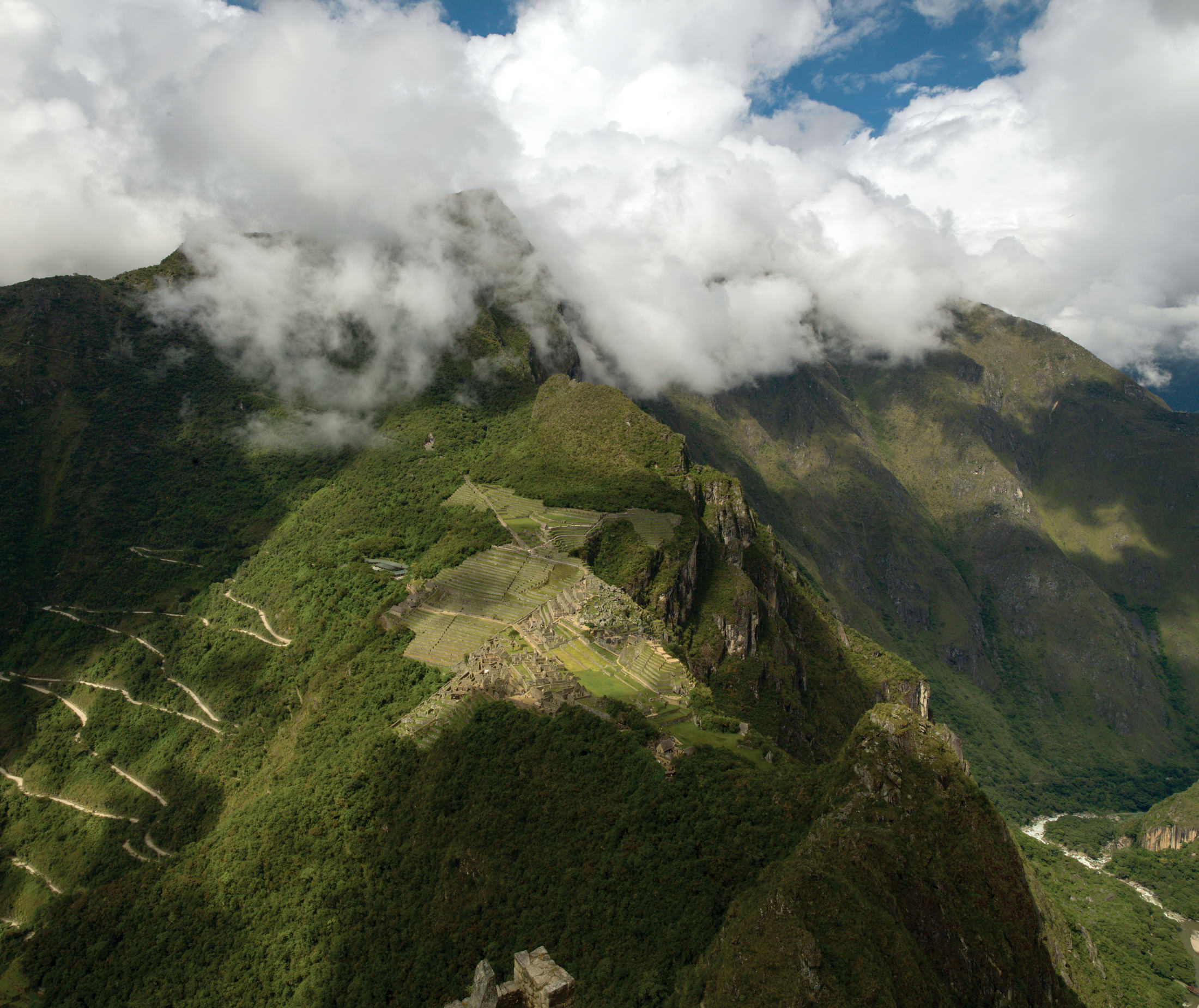
Machu Picchu looms above the valley and Aguas Calientes. It is sheer history rising an impossible height, against all odds. It is unphotographable in its entirety.
The grandness of Machu Picchu is mysterious and inspiring. Like many historical sites that speak for themselves, its grandeur is all the more significant for its ability to provoke questions and reflection on the history that created it. Interest in Machu Picchu in the modern age was sparked in the early 1900s when it was “discovered” by Hiram Bingham III, an American explorer and historian, with the help of Pablito, a local boy. Through the efforts of hundreds of restorers and with funding from the government, the ruins have become closer to what the last Incan royalty would have seen as they fled the valley.
Walking us across the grassy knolls, past llamas and a stone courtyard, our guide grins and says he considers young Pablito the first tour guide at Machu Picchu. It occurs to me that Pablito’s role might be more important than Bingham’s. The latter sparked interest in the region, while the former set the tone for the ways Peruvians would showcase their homeland for generations.
While changing terrain, intricate Incan trails, loitering llamas, and colourful garments all represent Peru, its charm and quality is in the upkeep and stewardship of history. Peruvians have mastered the art of talking about their history; they mix pride and detail. A guide named Camila, with a voice like a song, gently leads guests through the geography and history of the Cusco region, telling them the meaning of Quechua words (a language spoken by 39 per cent of the city and the basis for the language spoken by Jabba the Hut in Star Wars), and explains that the statue of Jesus in the Cusco Cathedral is black from hundreds of years of candle smoke. She points out the small idiosyncrasies of Cusqueñan Catholicism, in which indigenous symbolism has remained—a still-pregnant Mother Mary holding Jesus inspired by the indigenous symbol of a pregnant Mother Earth, for example.
Peru’s history is in the architecture and stories of the people, like the changing textures in the strata of the Andes, streaming by like a living film reel in the window of the Hiram Bingham. It is a history full of trial and tragedy, but also convalescence and unity. Like the rainbow flag that flies over Cusco, it is full of light and colour.

The Belmond Hiram Bingham, South America’s most luxurious train, journeys from Cusco to the town of Aguas Calientes, where the revered Machu Picchu looms.
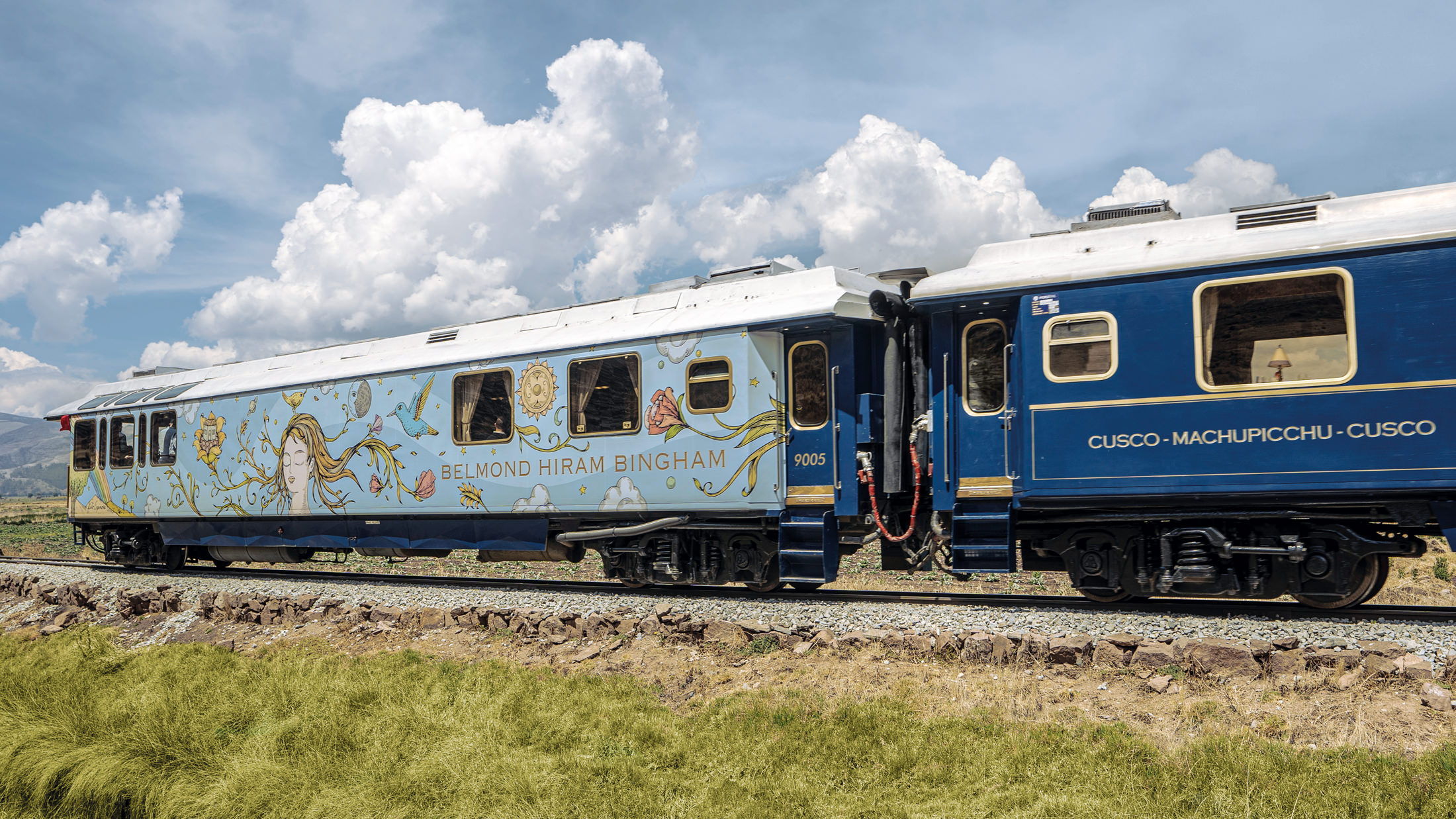
Espinosa has painted an angelic visage in his signature style surrounded by birds, bringing life and specificity to the car, placing it within the vibrancy of Peru’s cultural landscape.
________
Never miss a story. Sign up for NUVO’s weekly newsletter here.





